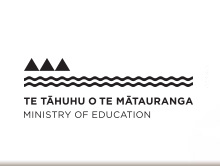Whakarāpopoto (wh. 5)
He whakarāpopoto
Nā Rāhiri rāua ko Ahuaiti a Uenuku-kuare. Ka riri, ka wehe ngā mātua nei. Ka noho atu a Ahuaiti rāua ko Uenuku-kuare ki Pouērua. Nā Rāhiri rāua ko Whakaruru a Kaharau. Ko Pākanae te wāhi noho o tēnei whānau. Ka tūtaki ngā tama nei ka pakanga.
Summary
The parents of Uenuku-kuare are Rāhiri and Ahuaiti. They had an argument and separated. Ahuaiti and Uenuku-kuare settled at Pouērua. The parents of Kaharau are Rāhiri and Whakaruru. This family lives at Pākanae. When these two boys meet there was conflict.
| Te momo reo tuhi Language style |
|
|---|---|
| Ētahi āhuatanga o tēnei momo reo tuhi Features of this language style |
|
I te Ākonga e Pānui ana i te Pukapuka
During Reading
He Ngohe
Anei ētahi whakaaro mō ētahi ngohe e hāngai ana ki ngā kōrero katoa o roto o Whakawhiti 33, Tūhoronuku.Kataea e te pouako ēnei te whakamahi kia tutuki ai ngā whāinga whakaako me ngā whāinga ako. Ka taea anō e ia te rāwekeweke ēnei whakaaro kia hāngai ake ki ngā whāinga ako me ngā hiahia o ngā ākonga.
Learning Activities
Here are some ideas for learning activities aligned with the writing in Whakawhiti 33, Tūhoronuku. Pouako can use these to help achieve their teaching and learning objectives. These ideas can be adapted to align with the learning objectives and needs of the students.
1. Pānuihia te kōrero, kātahi, tuhia ētahi rerenga korero e whakamahi ana i te reo tohu wāmua kei roto. Anei ētahi tauira: I ngā rā o mua ..., I tētahi rā ka ..., I hoki atu ia ....
Read the story, than write some sentences using past tense expressions. Here are some examples: In the past ..., One day ..., He returned to ....



